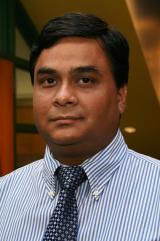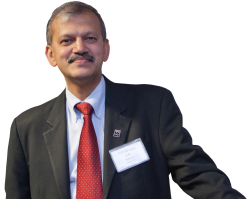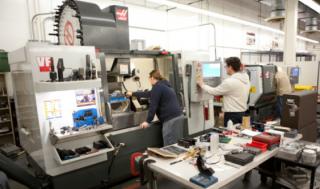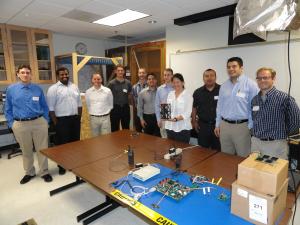Faculty: A collaborative approach to conduct non-destructive testing
 Over the past ten years, burst water and gas lines have been responsible for some $200 million in damage, and when they break, they are out of commission for a long time. Current techniques for inspecting pipes for damage—the very process that could minimize such accidents by identifying problems before they become manifest—require the shutdown of the entire distribution system for hours or even days, which is a costly proposition. It was recently estimated, for example, that shutting down the water distribution system in Arizona costs about $4 million an hour.
Over the past ten years, burst water and gas lines have been responsible for some $200 million in damage, and when they break, they are out of commission for a long time. Current techniques for inspecting pipes for damage—the very process that could minimize such accidents by identifying problems before they become manifest—require the shutdown of the entire distribution system for hours or even days, which is a costly proposition. It was recently estimated, for example, that shutting down the water distribution system in Arizona costs about $4 million an hour.
Non-destructive testing aims to develop techniques that can inspect the condition of critical pipelines and other infrastructure without hampering the delivery system. Rais Ahmad, an assistant professor of civil engineering and construction management and an expert in non-destructive testing, has recently embarked on a collaboration with Aerojet Rocketdyne’s non-destructive testing unit to develop a technique for finding defective pipes using guided acoustic waves.
“What we do is generate a signal and observe it from the other end of the pipe,” says Ahmad. “Once we receive the signal, we process it with some mathematical tools and try to identify whether there is any problem or defect in the pipe and if so, where it is.”
While Ahmad has been investigating the potential of guided waves to detect problems in underground pipes for some time, the Rocketdyne project is allowing him access to more sophisticated facilities than those available to him on campus and is helping to expand the application of his work beyond pipes to other structures. Currently he and his Aerojet Rocketdyne colleague, Steve James, are developing the testing instrumentation, and when their work is further along, they hope to interest oil companies in partnering with them as well.
They also have a second project queued up—a modeling approach to acoustic wave propagation generated by phased array transducers. The system is based on what Aerojet Rocketdyne has used to inspect welding, but Ahmad and James’s emphasis will be on modeling welding for different joints. They expect to start a design clinic for this project, with a student working in both Aerojet Rocketdyne’s lab and Ahmad’s lab.
For Ahmad, the Aerojet Rocketdyne collaboration is an ideal jumping-off point to forge collaborations with other companies, perhaps in other aspects of non-destructive testing, such as material characterization. “You can apply NDT to lots of areas,” he says.
A message from the Dean
February 6, 2014Industry partnerships – HAAS
February 6, 2014Industry Partnerships – Jet Propulsion Laboratory
February 6, 2014
Leave a reply Cancel reply
-
Conferences: Art of Innovation conference breaks new ground
February 6, 2014 -
IAB Highlight – Chris Erickson
February 6, 2014 -
Faculty: Aneurysm as a problem in fluid dynamics
February 6, 2014



